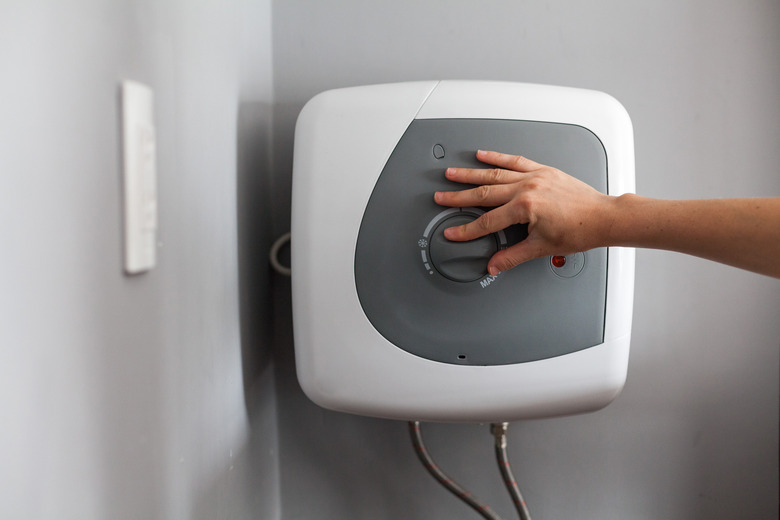How To Replace A Heating Element In A Water Heater
Water heater elements can and do wear out, and replacing one is a job any homeowner able to turn a wrench can do. However, it's important to make sure an element has actually worn out before you replace it or your electric water heater problem might not be resolved. It's easy to test the heating elements for continuity, and if one of them fails the test, a water heater repair shouldn't take long. You'll have to drain the tank, and that's as good a time as any to flush it to avoid having scale-related problems crop up in the future.
Turn Off the Power
Turn Off the Power
Before you do any type of repair to an electric water heater, it's important to shut off the power. You do this by locating the double-pole circuit breaker in the panel that controls the water heater, which should be labeled, and flipping it off. You might find the breaker has already tripped. If so, turn it all the way off.
Test Each Element
Test Each Element
Depending on the tank capacity, water heaters can have one or two elements, and the second one is usually close to the floor. To access them, unscrew the panel covering each one and pull back the insulation. Test the water heater element leads with a voltage tester to make sure they have no power, then unscrew and remove the wires from the terminals.
To test the element for continuity, use a continuity tester or a multimeter set to measure resistance. Place one lead on one of the terminals and the other lead on the other terminal. The tester should light up or, if you're using a meter, it should show zero resistance. If not, the element is burned out and needs to be replaced.
You should also test each element for a short, which is especially important if the breaker trips repeatedly. Touch one lead to one of the terminals on one of the elements and the other lead to the metal bracket on the water heater. This time, the tester should not light, and you should get a high resistance reading on your meter. If the tester lights or you get a zero resistance reading, the element is shorted and needs to be replaced. Test the other terminal in the same way, then test the other element.
Drain the Tank
Drain the Tank
Once you've determined that you need to replace an element, you have to drain the tank before you can start a water heater repair. If the element is the top one on a two-element heater, you need to drain only some of the water out. But if it's the lower element, you should drain the tank completely.
Turn off the cold water supply to the water heater. Run a hose outside or to an inside drain and connect it to the drain port on the bottom of the tank. Turn on a hot water faucet in the house to allow air into the pipes, open the drain valve on the water heater, and let the water run out.
Replace the Element
Replace the Element
Most elements feature a threaded connector that you unscrew with a special socket-like wrench called an element wrench, which is available at any hardware store. Fit the wrench over the element and, using a screwdriver for leverage, turn it counterclockwise. Pull the water heater element out of the tank when the head is completely unscrewed. Clean the orifice with a rag. Fit a gasket around the new element, screw in the element, and tighten it with the wrench.
Some elements are secured to the tank with bolts. Use a conventional socket wrench to remove the bolts. But before pulling out the element, note its orientation. The new element must go in the same way to ensure that it connects properly to the thermostat, which is mounted to the same bracket as the element.
Flush and Fill the Tank
Flush and Fill the Tank
Before you refill the tank, it's a good idea to flush it by turning on the cold water supply and letting some water run through the drain hose for several minutes. This procedure will remove scale and rust that has collected on the bottom of the tank and which may be affecting the performance of the appliance. After flushing is complete, close the drain valve and remove the hose, and let the tank refill. Keep one hot water faucet open until you see a steady stream of water with no bubbles, at which point you can close it.
Connect the Wiring
Connect the Wiring
Before you connect the wires to the new water heater elements, you may want to clean them with a file or acetone to remove corrosion. Replace them on the same terminals to which they were connected to the old elements and tighten down the screws. Turn on the breaker and let the water in the tank heat up, which will probably take a few hours. The water heater repair should then be complete.
